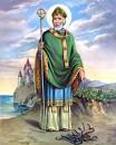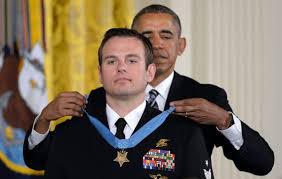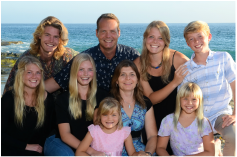|
On March 22, 2016, Islamic terrorists from the organization Islamic State (also known as DAESH) killed over 30 and wounded up to 230 in coordinated attacks in Brussels, Belgium, at the international airport and a subway station. Shortly after the attacks, Islamic State’s news agency claimed responsibility. Belgian authorities think suicide bombers attacked the airport at 8 a.m. and a third suicide bomber hit a subway station at 9 a.m. Authorities are looking into the possibility of attackers who are on the run.
Days before this attack, Salah Abdeslam, one of the suspects in the November 13, 2015 attacks in Paris, had been captured in Brussels. Authorities believe that fighters in Abdeslam’s terrorist cell believed they were going to be caught soon, and this is why they may have attacked. A terrorist cell is a group of terrorists who plan attacks together. Each cell member knows each other and protects each other at all times. It is also possible that the terrorist cell members’ families hide and protect the terrorists from the authorities. What is common in a cell is that only one or two of the cell members have information regarding the wider terrorist organization. A terrorist cell is organized this way so that if one or two of the cell members are captured, it is possible the authorities can not discover information about the larger terrorist organization. World leaders of the west denounced the attacks. French President Francois Hollande was quick to denounce the attackers and signal that this was not just an attack against Belgium, but against all of Europe. Hollande stated, “Terrorism has struck Belgium, but it was Europe that was targeted and everyone is affected.” President Barack Obama, in Cuba, stated, “This is yet another reminder that the world must unite” to counter terrorist groups. The Paris terrorist attacks in 2015 placed Brussels as a center of Islamic radicalism in Europe. In November 2015, Islamic State terrorists attacked in Paris, killing 130 people and wounding hundreds. The attacks were carried out by Belgian nationals and planned in Belgium. Since those attacks, Belgian authorities have arrested over a dozen suspects. Brussels, Belgium is an important city in international affairs and is a center for western political organizations. It is the home of the European Union (EU). The European Union is the economic union of European countries. Brussels is also the headquarters of the North Atlantic Treaty Organization (NATO). NATO is the military alliance of Western Europe, Turkey, the United States and Canada. After World War II, the United States of America led the effort to form NATO and it provides the majority of NATO’s budget and military might. Questions
1 Comment
 Patrick was born in fourth century Roman Britain (c. 390-461) to a loving family of wealth. His parents were most likely successful merchants and administrators of Rome. On February 27, 380, Roman Emperor Theodosius issued the Edict of Thessalonica and declared the official religion in the empire to be the Catholic Church. Patrick was brought up in this faith. He had a privileged childhood as the son of wealthy Roman leaders, but suffered great hardships for a number of years. Patrick brought Christianity to the Irish and changed the course of history. At the beginning of the medieval ages, many in Europe clung to the pagan religions of the past. Ireland, the island to the west of Britain, was a land where Christianity was unknown. Celts in Ireland followed a belief called Druidism. They believed in many gods, and Druid priests had many practices that we would call barbaric. Druids sacrificed humans to keep their gods happy. As a sixteen year-old, Patrick’s easy life of comfort and prestige changed forever. Some reports state Patrick had snuck out of his parents’ home and took part in an all-night pagan ritual. With dawn breaking, a small band of Irish pirates raided Britain and captured Patrick. He was taken to Ireland and sold into slavery, completely separated from his loving parents. Patrick wrote later that he had left the faith of his family, and for this he was being punished. For six years, Patrick worked as a common slave in Ireland. At any instant, he could be killed, mutilated, or beaten by his owner. He was far from his home and far from any help his Christian friends could provide. Instead of becoming desperate and sad, though, Patrick spent his time in prayer and reflection. Working as a shepherd for six years, he grew to love the Irish land and people, and yearned to one day teach them the Christian belief. He united his sufferings as a slave to the sufferings of his savior, Christ, and his love for his captors grew. According to Patrick’s writings, he heard the Heavenly Father speak to him and tell him to escape from slavery and to walk to the coast. A boat would be waiting for him. As a slave, if he were recognized, he would have been put to death! Patrick did as he was told, and there was a boat waiting for him. The captain agreed to take him back to Britain. Patrick’s parents were so excited to see him, but they were also disappointed to hear what he wanted to do. He wanted to become a priest and return to the people who enslaved him in Ireland. His parents wanted him to get married, become wealthy and important, and raise a family. If he returned to Ireland, wouldn’t he be killed by his former slave owner for escaping? How could he have a family if he became a priest? Patience is a virtue Patrick practiced. He went to Gaul (France), studied to become a priest, and waited for his calling to go back to Ireland and spread Christianity. At the age of 49, after about 25 years of waiting, he finally received the order to go to Ireland as a bishop to evangelize. He returned, went to his former slave owner, and spoke about Christ. Amazingly, within Bishop Patrick’s lifetime, Ireland became a Christian country! And, since this time Irish missionaries have travelled throughout the world spreading the news of Jesus and his Church. There are many legends attributed to Patrick in Ireland. For example, some say he chased all the snakes out of Ireland, or that he used a three-leaf clover to explain the Trinity. But, what is not legend is that within his lifetime, Ireland changed from a land of slavery, human sacrifice, and paganism, to a Christian land, where the slave trade came to a halt, and where murder and tribal warfare decreased. Along with bringing Christianity to the Irish, Patrick established monasteries that some say saved Western civilization. In the Middle Ages, a monastery was a place where men lived and worshipped, served as doctors and nurses, fed the poor, took care of orphans, and copied important documents. It was the only place of learning in the first centuries after the Roman Empire fell. As Roman law and order gave way to chaos, Irish monks kept working, copying classic texts of the west, and spreading Christianity. For centuries after Patrick died, Irish monks spread both the Christian faith and the classics. It is for this that some historians claim that St. Patrick saved Western Civilization. To read the actual writings of Saint Patrick: http://www.archive.org/details/writingsofsaintp00patr Lesson Ideas for Ages 3-11: 1. Look up Ireland on a map. Sketch your own drawing of Ireland and Britain and the rest of continental Europe, or, find a map outline. Color in Ireland green. Ireland is known for being green because it rains so much in Ireland. “Irish weather” means that it is misty and wet outside. This weblink has an excellent outline map of Ireland: http://www.google.com/imgres?imgurl=http://0.tqn.com/d/geography/1/0/1/L/europe.jpg&imgrefurl=http://geography.about.com/library/blank/blxeurope.htm&h=561&w=807&sz=64&tbnid=3N8DrCBfvYFDrM:&tbnh=90&tbnw=129&prev=/search%3Fq%3Doutline%2Bmap%2Bof%2BEurope%26tbm%3Disch%26tbo%3Du&zoom=1&q=outline+map+of+Europe&docid=JhUUGtUtO8jd6M&sa=X&ei=ZCZeT6yWDKauiAKU2qjRCw&ved=0CC8Q9QEwAA&dur=1357 2. Writing Ideas for Ages 12 and older (and for high achieving younger kids!) a. Take the biography of St. Patrick and try to write one sentence that summarizes each paragraph. b. Answer this question in a one-paragraph essay, “Was Patrick’s decision to become a priest and return to Ireland crazy, or was it courageous?” Navy Seal Earns Medal of Honor
On Monday, February 29th, 2016, Navy SEAL Edward Byers received the Medal of Honor award. President Obama awarded Mr. Byers the highest honor a U.S. soldier can receive for his role in rescuing an American civilian held hostage by the Taliban in Afghanistan. The United States has been fighting the terrorist organization called the Taliban since 2001. Medal of Honor The United States Medal of Honor is the highest military honor an American can earn. It is awarded for acts of valor above and beyond the call of duty. The Medal of Honor award was created during the American Civil War (1861-1865). Congress determines who wins the award, and the President gives the award in the name of Congress. There have been 3,513 Medals of Honor awarded to the country’s soldiers, sailors, airmen, Marines, and Coast Guardsmen. Nearly half of them were awarded to Civil War combatants. Fourteen men have received two Medals of Honor for two separate actions. In 1963, Congress required that all Medal of Honor recipients had “distinguished himself conspicuously by gallantry and intrepidity at the risk of his life above and beyond the call of duty.” And, the following three circumstances must be met:
Navy SEAL Edward Byers Navy SEAL Edward Byers helped rescue American hostage Dilip Joseph, a doctor, husband and father of four, from the Taliban, who held him hostage in Afghanistan. Byers was part of Navy SEAL Team Six that entered the room where Joseph was held. The first SEAL entered the room and was shot and killed by a terrorist with an AK-47. Byers then entered the room, engaged a guard in a firefight and tackled and subdued another guard. After Joseph identified himself as American, Byers leaped across the room and flung himself on top of Joseph, protecting Joseph from the bullets with his own body. While protecting Joseph, Byers fought another terrorist and pinned him up against the wall. Byers is one of 11 living recipients of the Medal of Honor from the war in Afghanistan. Questions
|
John De GreeJohn De Gree writes the current events with a look at the history of each topic. Articles are written for the young person, aged 10-18, and Mr. De Gree carefully writes so that all readers can understand the event. The perspective the current events are written in is Judeo-Christian. Receive Articles and Coupons in Your EmailSign Up Now
For Email Marketing you can trust. Archives
June 2024
Categories
All
|
|
SUPPORT
|
RESOURCES
|
|



 RSS Feed
RSS Feed



